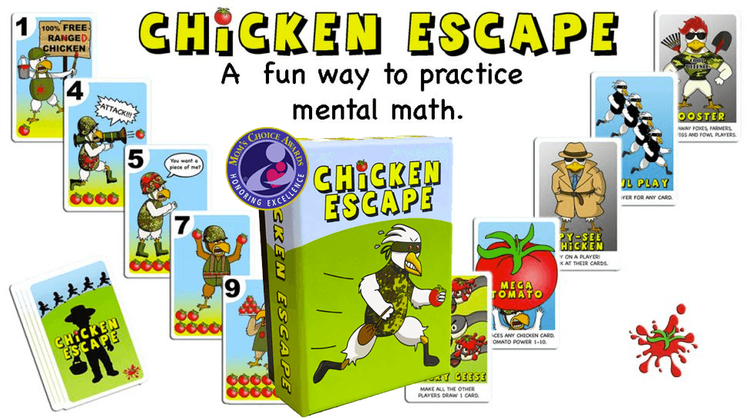Math word problems are an important aspect of mathematics and that is why they appear in every stage of learning math. They involve a lot more than just solving equations and applying algorithms. They require good reading comprehension skills, critical thinking, and creativity. They help children realize the connection between math and real-life and they are an important assessment tool for teachers and parents. A variety of word problems, meaningful discussions, and a careful transition from one-step to multi-step word problems will help our students succeed and enjoy solving word problems.
Make a plan/ select a strategy
After reading and a word problem the students are required to form a plan that will lead them to the solution. First, they need to be clear of “what they are looking for” and understand the question. Then they identify the important/useful information, the details that will help them solve the problem. (They can underline it). Next, they select a strategy or a combination of strategies that will help them visualize and solve the problem.
Some strategies are:
- Draw a picture or a diagram
- Find a pattern
- Make a table or a list
- Work backward
- Act it out/role play
- Write an expression
Problem-solving strategies can be taught and practiced. After practicing specific strategies with the appropriate problems students will be able to select the correct strategy on their own. Of course, the same problem may be solved with more than one strategy and students have a choice. Strategies practiced with simple problems can be applied in more advanced ones. (find more about problem-solving strategies here )
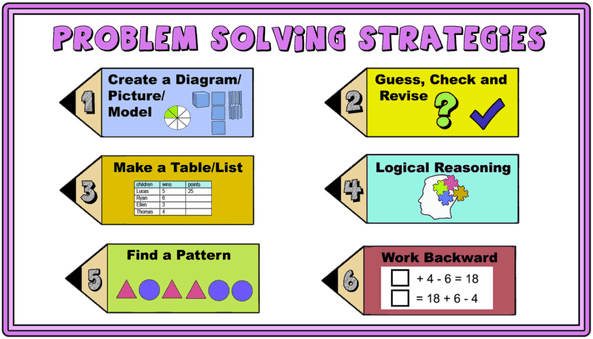
Explaining/ using math language
Explaining how they solved a problem and why, and retracing their own steps gives students the opportunity to use mathematical language, and communicate their understanding. That makes their understanding stronger and boosts their confidence.
Critical thinking
When they identify the important information and work on a plan to solve the problem the students are learning rules and logic that prepares them for real-world situations when they face a challenge. They practice accepting challenges and showing perseverance. They are reminded to use their common sense and logic to tackle a problem. Coming up with your own way of solving a problem shows deep understanding, critical thinking, and creativity.
Connection to real life
Word problems often are taken from everyday life situations and they describe a problem that a child or a grown-up will have to solve. For example,
Helen invited 20 friends to her birthday party. Every friend will get two slices of pizza, two cookies, and a juice box. If the pizzas come in 8 pieces, how many pizzas should Helen order?
This is a real-life problem that students can relate to, a problem that needs to be solved with math. This reminds students that math is everywhere, is connected to life and it is very useful.
Assessment
Solving math word problems requires a deep understanding of concepts and strategies and good reasoning skills. It is, therefore, a great assessment tool for teachers and parents, as it helps them ascertain which skills have been mastered by the students and which areas need more work. Students are required to show their way of thinking, (to show their work ) which allows the teacher/parent to clearly understand where a student needs help.
Some students love to solve word problems and enjoy the challenge. However, for some students solving word problems are a dreaded activity. Math word problems can be interesting and exciting and bring life into math. Teachers and parents can encourage students to have a positive attitude toward word -problems by using real objects to visualize word problems, by teaching and practicing problem-solving strategies, and by presenting word problems in an attractive and exciting way, in the form of games or quests.
Without a doubt, word problems are a valuable part of mathematics, that teaches students how to become independent creative thinkers and equips them with skills and principles to solve real-life problems. Word problems connect reality and mathematics and provide teachers and parents with a great assessment tool.
We have created a collection of 150 digital and 145 print word-problem-solving activities. The collection includes 8 types of activities that are great to use for number talks, meaningful math discussions, and more.
Select the operation for the problem.
This group of activities requires the students to select the operation/operations that we need to use to solve the problem. Answers may vary, for example, students might use addition instead of multiplication, or multiplication instead of division for some problems. The purpose of these activities is to initiate discussions and talk about different word problems. The students can draw pictures, diagrams or use any other strategy to decide the correct answer.
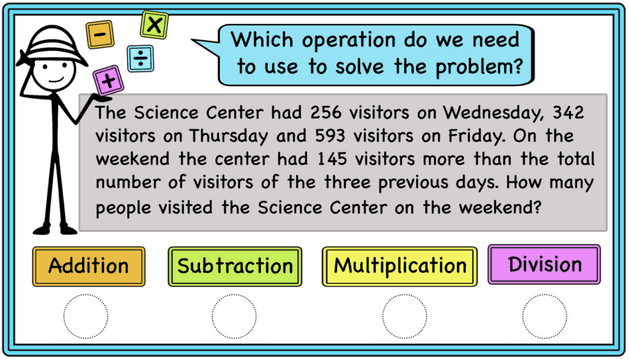
Select the correct expression/expressions for the problem.
More than one answer might be correct. The purpose of these activities is to initiate discussions and talk about different ways to solve a problem and the order of operations.
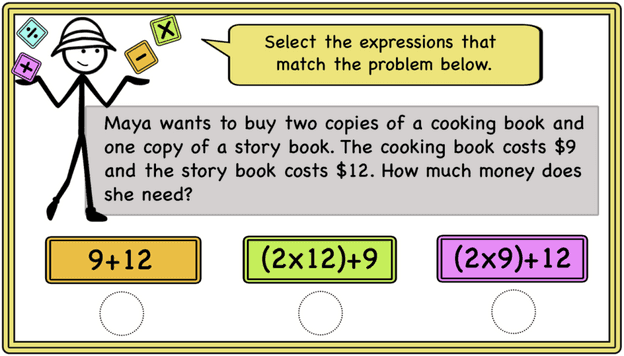
Do we have enough information?
This group of activities requires the students to decide whether enough information is given to solve the problem. The goal of these activities is to initiate meaningful discussions and help students find the important information in a problem and understand that when writing a problem they need to include all the necessary information.
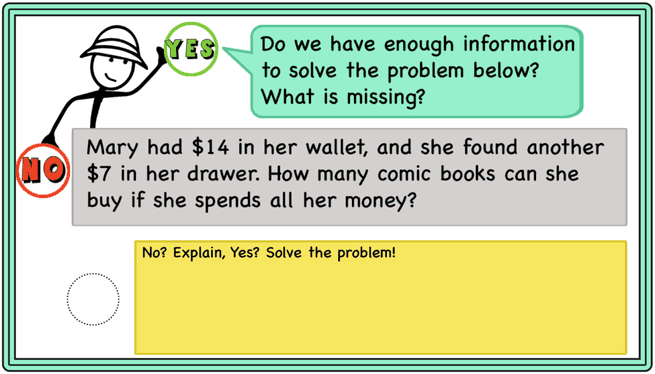
Complete the question.
These activities require the students to complete the question for the problem. Again, this is to initiate discussions and get the students thinking about the different questions they can ask, how it changes the problem, and how we form a question in a problem.
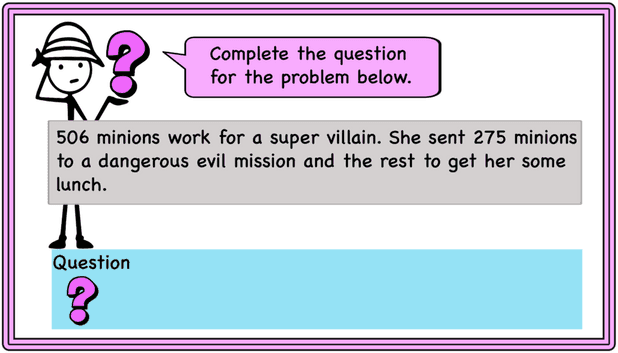
One, two three, and more steps word problems.
The next 3 groups of activities are one-step, two-step and three (and more) step word problems. Different types of problems are included to get the students thinking. Two and three-step problems give us a chance to explain the order of operations as well. Once the students write the expression if they solve it without following the order of operations the answer will not make sense. Allow the students to solve the problems in any way that helps them to better understand.
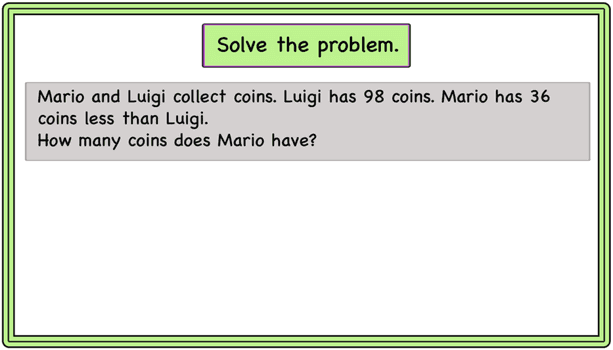
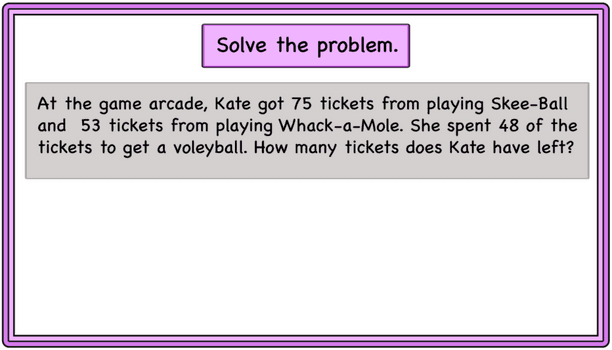
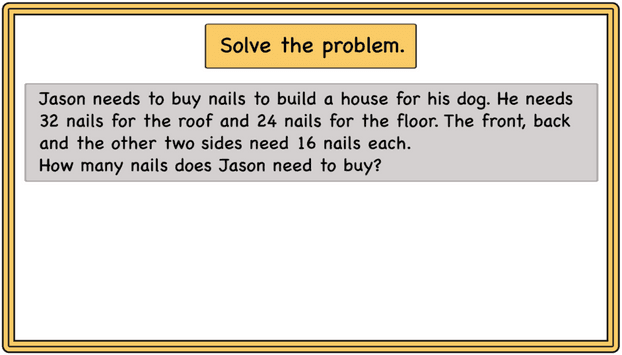
Challenge
Some more challenging/tricky problems to challenge your students with.
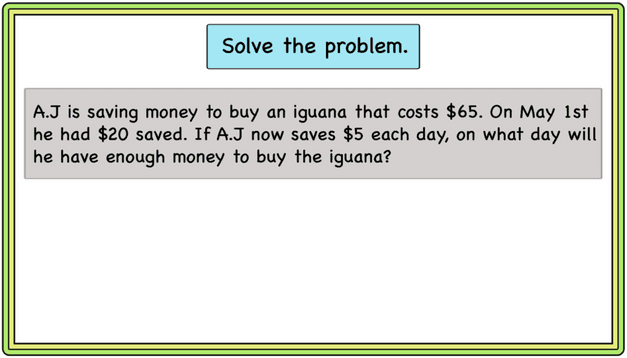
Find the free and premium versions of this resource below. The premium version includes 150 digital and 145 print activities.
Find the worksheets version here
and the bundle resource of both the worksheets and the print and digital task cards here

